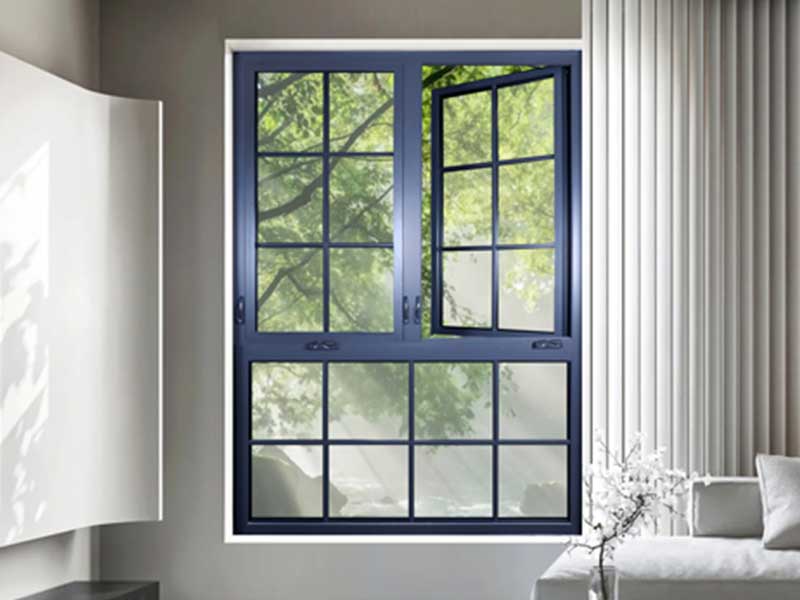A casement window is the most common type of window and comes in two types: inward opening and outward opening. The sash of a casement window is connected to the frame by hinges and can be swung open.
The advantages of this type of window are its simple structure, the ability to open the entire window 100%, excellent airtightness when closed, and high thermal performance, which is becoming increasingly important in today's energy-efficient buildings.
However, the disadvantage is that an open sash will occupy a certain amount of space, making it unsuitable for very narrow locations where there is not enough room to accommodate the open sash.

A sliding window uses sash fitted with rollers that slide along tracks on the window frame. The advantage of this type of window is that it does not occupy extra space whether in the open or closed position, and it is comparatively simple in construction.
The disadvantage of a sliding window is its inferior airtightness compared to casement windows.
Although recent advancements in technology have improved the airtightness of sliding windows, they still generally do not match the thermal performance of casement windows and have higher energy consumption. Therefore, customers who seek high insulation and high thermal insulation often avoid using sliding windows.
1. Different Appearances
Appearance-wise, the main difference between casement windows and sliding windows lies in their compatibility with the overall style of the building. Casement windows offer more flexibility in terms of pattern and can create any vertical line effect.
For large sectioned floor-to-ceiling windows, the opening sash only occupies a small portion of the entire window, making it suitable for high-end projects with strict overall aesthetic requirements. On the other hand, sliding windows, which can only slide horizontally, are difficult to match with large sectioned fixed glass.
2. Different Prices
In terms of price, there is little difference between casement windows and sliding windows of the same grade, with casement windows being slightly more expensive.
3. Insulation and Soundproofing Effects
In terms of insulation and soundproofing, casement windows on the market generally use sealing strips for sealing, while sliding windows generally use wool piles. The sealing effect of rubber strips is generally superior to that of wool piles.
For casement windows, the opening sash usually uses multi-point locks for tight sealing, providing better sealing performance. Sliding windows, on the other hand, typically use hook locks or butt locks for fastening, which are less ideal in terms of airtightness.
4. Performance
In terms of the three primary performance aspects of doors and windows (wind pressure resistance, watertightness, and airtightness), casement windows are generally superior to sliding windows.